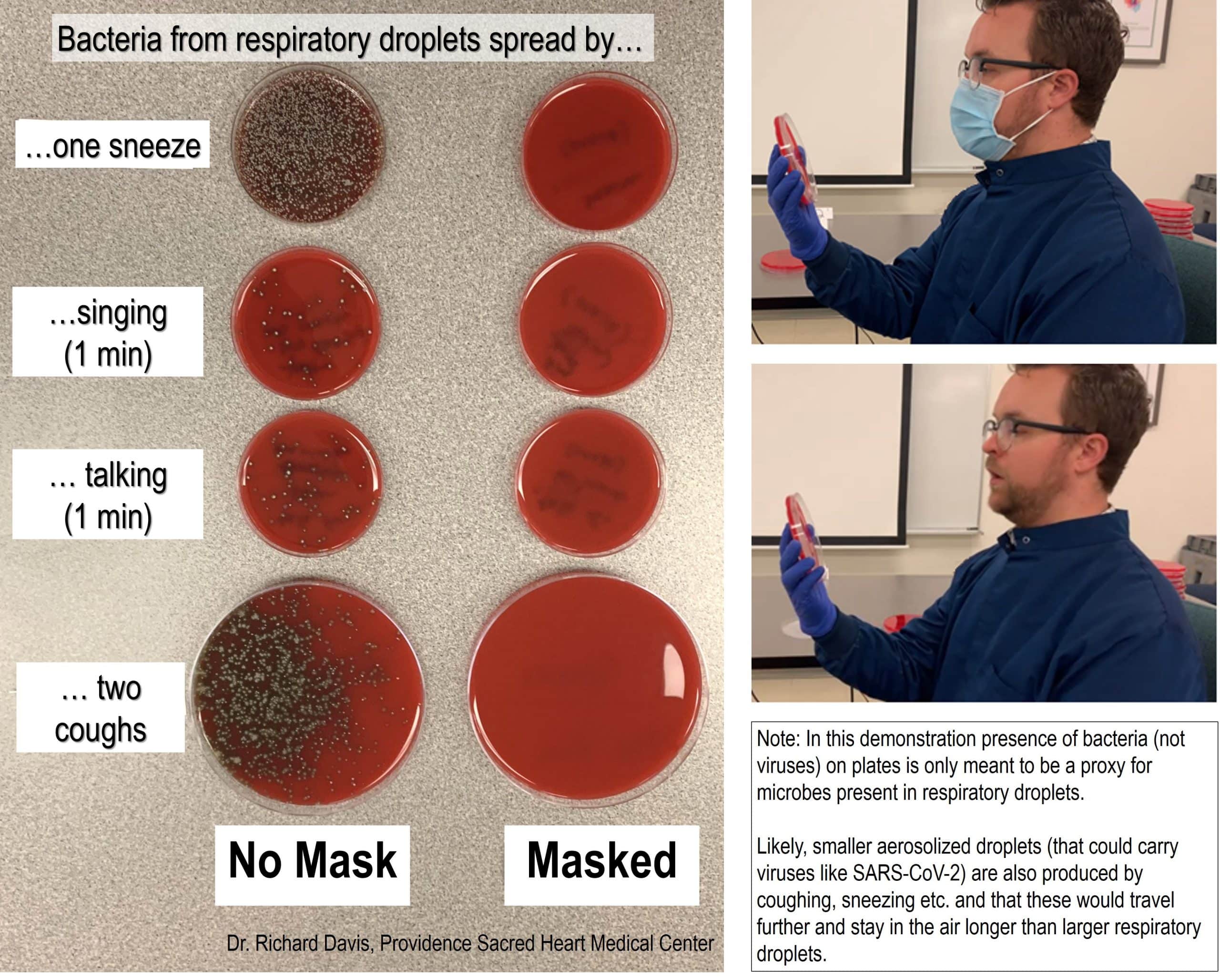A lot of people think that wearing masks in public is silly or not doing any good but honestly, it makes a big difference when we collectively do it. I know, it might not be ideal but it really is helping us in the long-run.
Twitter for a while now has been blowing up with tweets from different medical professionals breaking things down a bit and one tweet that is well worth sharing was posted by Rich Davis. Rich Davis for those who do not know is a clinical microbiologist. He made a demonstration going over the differences of sneezing and things of the sort with and without a mask. As you can see below, without the mask, bacteria spread much more.
What does a mask do? Blocks respiratory droplets coming from your mouth and throat.
Two simple demos:
First, I sneezed, sang, talked & coughed toward an agar culture plate with or without a mask. Bacteria colonies show where droplets landed. A mask blocks virtually all of them. pic.twitter.com/ETUD9DFmgU
— Rich Davis, PhD, D(ABMM), MLS 🦠🔬🧫 (@richdavisphd) June 26, 2020
You see, all he did for this specific demonstration was hold these cultures closer to his face and then do what you’d do around others in public. He talked, sang, coughed, and so forth. While he was wearing a standard surgical mask, that in itself is something we see a lot of people wearing and would somewhat be the equivalent to your average fabric mask as well. This is something we should all see, especially those of us who think wearing a mask isn’t a big deal.
Now, Rich didn’t stop there he also kept moving forth also demonstrating what might happen germ-wise even when keeping a ‘distance.’ As you can see in his results below, wearing a mask in this kind of situation also made a big difference as well. I know, it’s irritating and might not be comfortable but if you’re able to wear a mask, you should be wearing one.
What about keeping your distance?
Second demo: I set open bacteria culture plates 2, 4 and 6 feet away and coughed (hard) for ~15s. I repeated this without a mask.
As seen by number of bacteria colonies, droplets mostly landed <6 ft, but a mask blocked nearly all of them. pic.twitter.com/8wDdvIHHMa
— Rich Davis, PhD, D(ABMM), MLS 🦠🔬🧫 (@richdavisphd) June 26, 2020
The CDC for a while now has been telling us to wear masks when out and about. While it’s not mandatory everywhere, it is something we need to do for our fellow people. Sure, this virus seems to be dying down but if we want to keep things that way we need to be careful and cautious moving forward. No, this isn’t going to completely stop things but it can help.
I’m aware that this simple (n=1) demo isn’t how you culture viruses or model spread of SARS-CoV-2.
But colonies of normal bacteria from my mouth/throat show the spread of large respiratory droplets, like the kind we think mostly spread #COVID19, and how a mask can block them! pic.twitter.com/16azsiIbZd
— Rich Davis, PhD, D(ABMM), MLS 🦠🔬🧫 (@richdavisphd) June 26, 2020
My mask vs. no mask demonstrations got perfectly summarized in this brief 34 second video. Masks keep your respiratory secretions to yourself! @providence_phc https://t.co/kkK0KIhSbf
— Rich Davis, PhD, D(ABMM), MLS 🦠🔬🧫 (@richdavisphd) June 26, 2020
To learn more about the reasons why we should all be opting to wear masks during this pandemic take a look at the video below. Sure, they aren’t perfect, but according to this, they might be helping. This pandemic is not over yet, and we should not be forgetting that. At the end of the day, we don’t know we’re affected until symptoms show and it’s quite possible that you’ll never show symptoms at all.



